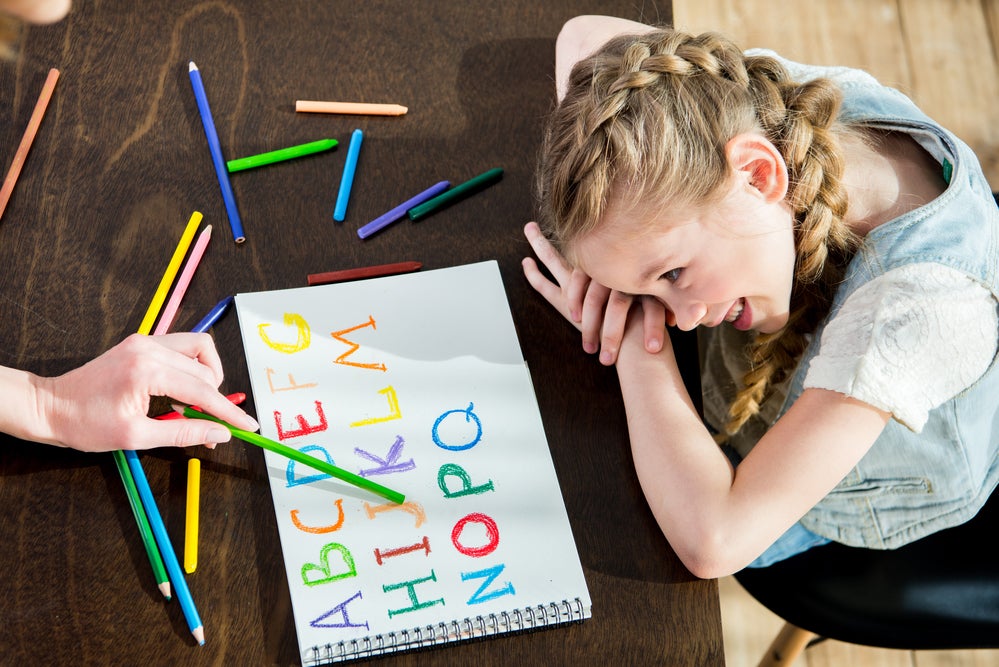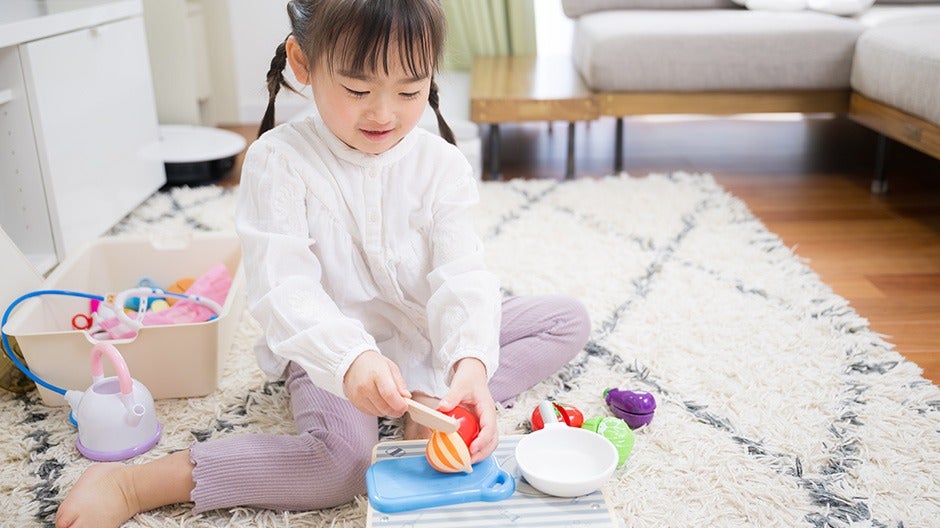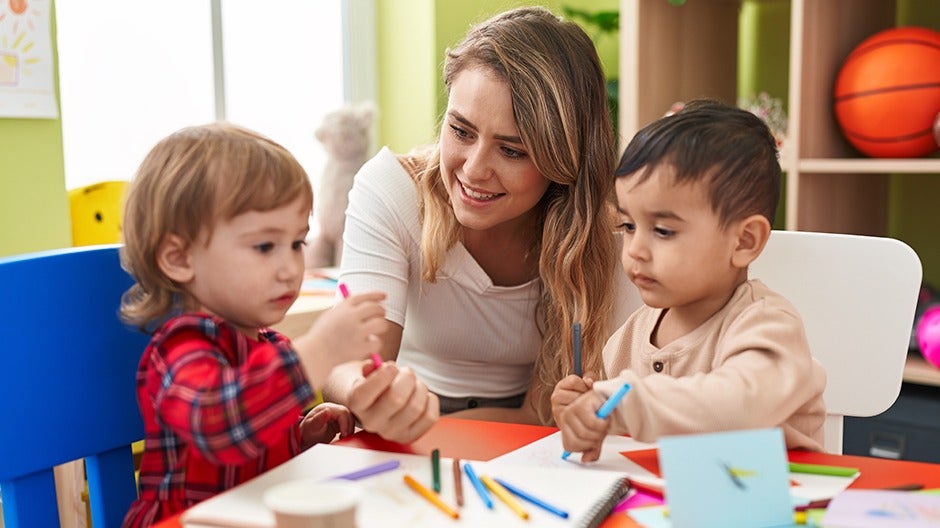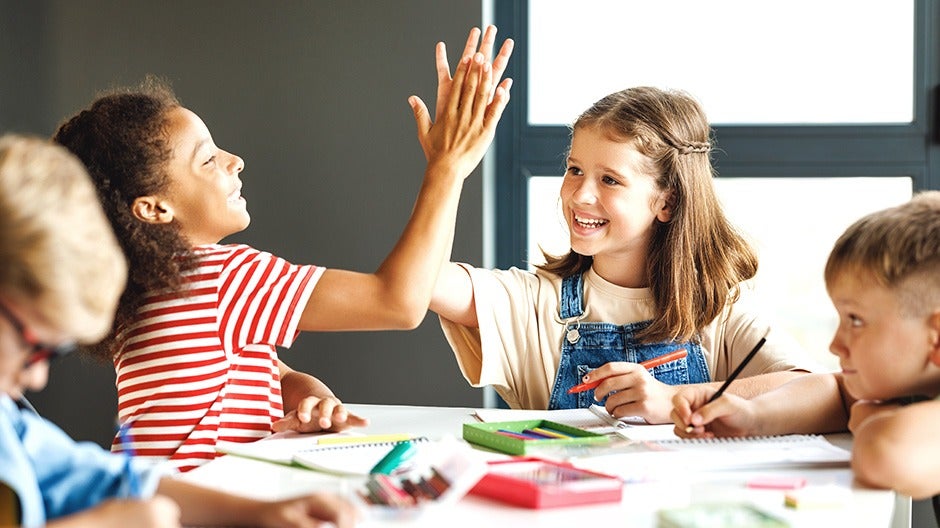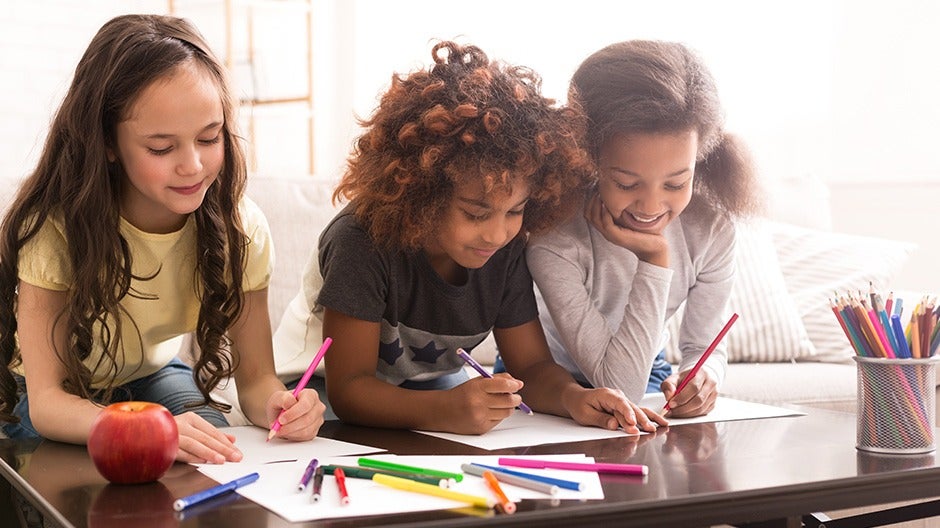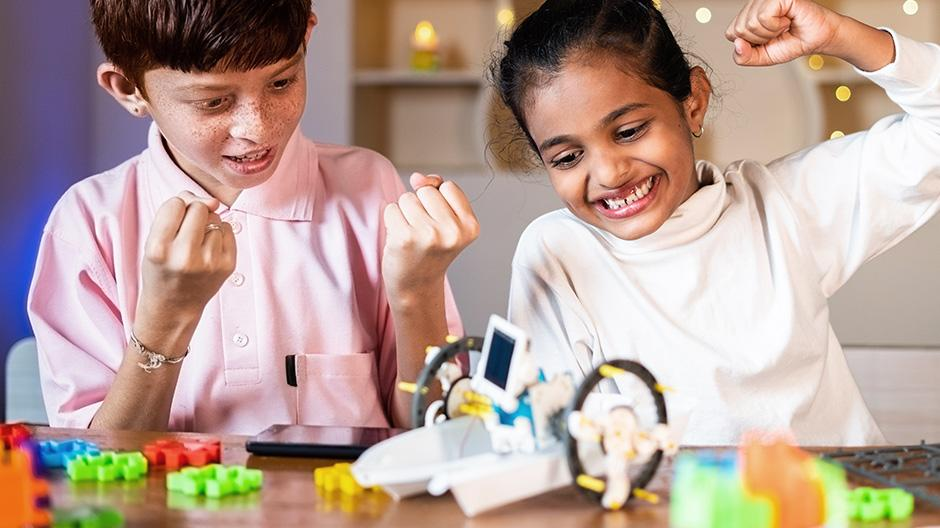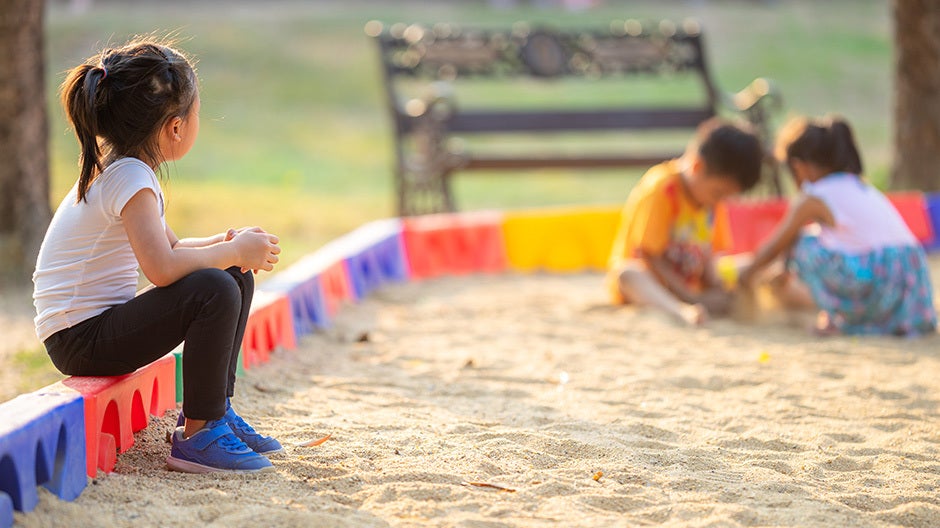When you teach letter recognition to kids, you help them take one of the key first steps in learning to read. Eventually they’ll sound out words, blend syllables together, and master other early reading foundations. But first, they’ll need to learn the alphabet.
Identifying letters is an important piece of the early reading puzzle and an essential Core Skill, part of the 5 C’s at the heart of the Begin Approach to helping kids thrive in school and life. Strong Core Skills create the foundation for a kid’s success in school (and eventually their career), making a big difference in their lives.
Want to teach letter recognition to your child? We’re here to help!
The Short Cut
- Letter recognition creates the foundation for kids to work on more advanced reading skills
- Kids are often ready to begin learning to recognize letters by age 3
- Parents can help with activities like reading alphabet books, making letter cards, and exploring the letters in loved ones’ names
When Are Kids Ready to Learn Letter Recognition?
Every child’s path to learning how to read is unique, but many express an interest in learning the alphabet by age two or three. This stage can be a lot of fun for parents. It’s a sign that a kid’s interests and abilities are expanding, and when they start pretending to read (maybe holding a board book upside-down, dragging their finger along the letters and making up the words), it’s adorable!
Early interest in letters can manifest in a few different ways:
- If your child has an older sibling, they may ask for “homework” to do while their sibling does their own.
- Your child may also notice adults and older kids reading books that have more words than pictures. Your toddler may want to know how to read those “big” books, too!
- If your child isn’t enrolled in any sort of formal schooling yet, their initial interest in reading and letter recognition may be light and casual. This is great! There’s no need to rush into it.
Kids’ unique personalities mean they often engage with letters (and start on other early reading skills) in different ways and at different times. That’s OK! Lean into what works for your child, and celebrate their progress over perfection.
5 Simple Activities for Teaching Letter Recognition
Kids learn best through play, so the best letter recognition activities are fun, simple, and engaging. Here are some easy ideas you can try at home. Some focus on reading, some are hands-on, and some tap into kids’ natural interest in other people—see which one works best for you!
1. Read Alphabet Books
Although this activity is simple, it’s common for a reason—it works! If you don’t already have a few alphabet books at home, your local library is sure to have some to lend.
Repeated exposure to the alphabet sets a strong foundation for your child to develop their letter recognition skills. Starting with the basics (like what letters are, their shapes and names, and that each letter has its own sound) prepares kids for more advanced reading skills as they grow.
2. Touch and Feel Letters
Kids spend all day touching and exploring the world around them. Teaching them letter sounds can be easier (and more fun!) when you engage their senses in ways that aren’t just visual or auditory.
Plus, kids love new things, and many of them welcome permission to get messy! Letting them do something unusual and make a mess with letters offers them a great incentive to learn.
In this activity, you’ll play with them as they build letters out of fun materials (or swipe their fingers through a big pile of shaving cream!).
What You Need
- Something kid-safe and malleable enough to turn into letters (shaving cream, pipe cleaners, play dough, etc.)
What to Do
- Introduce a letter to your child
- Show them how to make the letter in whatever material you choose
- Ask your child to make a copy of the letter alongside you while you make it again so they can follow along
- Draw the letter and ask them what its name is
This activity works well because it teaches the letter in stages. First you show it to them, then you create an association between what they’re seeing and what they’re doing, and finally you ask them to recall the letter.
Learning to recognize the letter might take a bit of time and practice, but don’t worry! You and your child will get there.
3. Explore Names Together
This activity can be effective and useful for helping kids learn letter recognition as well as the names of people on their sports teams, in their classroom, or in any other group of people.
If it’s your first time doing this activity, consider starting with your child’s immediate family to make it a bit easier.
What You Need
- Large sheet of paper
- Markers
What to Do
- Use a dark, easily readable color to write the names of people your child is interested in on a large sheet of paper
- Identify a letter in someone’s name (“Look, ‘Daddy’ starts with a D!”)
- Ask your child to identify the letter in other names by saying something like, “Which other name has an D in it?”
- Change up the letter in question until you cover each name, and then help them tally up all of the letters they find
For even more fun, make a game of seeing which letter appears the most times. You can even make bets beforehand (we suggest banking on a vowel). Whoever correctly guesses which letter will appear most can get a reward!
This activity helps reinforce two ideas to your child. First, it engages their letter recognition skills by exposing them to the alphabet repeatedly. Second, it helps them understand that the alphabet is a code made up of symbols (letters).
4. Alphabet Cards
Similar to alphabet books, alphabet cards are an easy, reliable option to help your child learn letter recognition. And while there are many alphabet cards on the market, it’s way more fun to let your child make their own!
What You Need
- Large index cards or blank sheets of paper
- Fun decorative materials (glitter glue, stickers, pom poms, etc.)
What to Do
- Have your child write a letter on a card
- Ask them to add a picture of something that starts with that letter (a dinosaur for D, mommy for M, etc.)
- Let your child color and decorate the rest of the card
- Repeat for each letter you’re working on
Creating their own cards lets kids exert some autonomy and independence. It may help them become even more invested in reading and recognizing letters! For younger children, you can write the letter for them and let them spruce it up.
5. Dot Letters
One challenge for children when it comes to recognizing letters is understanding what shapes letters are “made” of.
For example, the letter O is often taught as a letter that looks like a circle. Other letters are made up of curves, straight lines, dashes, and all sorts of shapes!
A helpful option for supporting your child’s efforts to recognize their letters is to break down the shapes that make up letters. This is where dot markers (or round stickers) can come in handy!
What You Need
- Dot markers or stickers
- Blank sheets of paper
What to Do
- Write out the alphabet on the blank sheets of paper, using large, empty circles to form each letter
- Have your child fill in the dots with dot markers or stickers to see how the letters are formed
Utilizing a uniform shape—like a dot—to work through the alphabet helps your child grasp the shape of letters both visually and physically. Understanding how letters are formed can help kids recognize letters more easily.
Letter Recognition with Begin
At Begin, we know how important early literacy is to a child’s ability to thrive at school and in life. Teaching letter recognition to kids helps them build a strong, solid foundation they can use to launch the rest of their reading and learning journey!
HOMER, our award-winning early learning app, is full of fun, engaging games that help kids develop the skills they need to get their best start to achieving their fullest potential. Just 15 minutes a day has been proven to raise early reading scores by 74%! Or you can check out our Early Learner Program to see how our products can work together.
Teaching letter recognition can seem like an impossible task. But it doesn’t have to be complicated. Remember to focus on progress over perfection, take advantage of kids’ natural love of play, and go a bit at a time. You’ve got this—and if you need a little extra help, we’re here for you!
